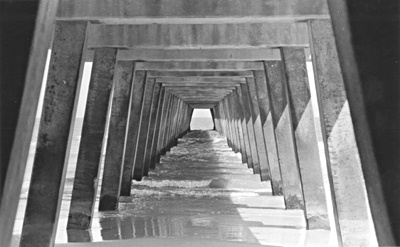All Nonfiction
- Bullying
- Books
- Academic
- Author Interviews
- Celebrity interviews
- College Articles
- College Essays
- Educator of the Year
- Heroes
- Interviews
- Memoir
- Personal Experience
- Sports
- Travel & Culture
All Opinions
- Bullying
- Current Events / Politics
- Discrimination
- Drugs / Alcohol / Smoking
- Entertainment / Celebrities
- Environment
- Love / Relationships
- Movies / Music / TV
- Pop Culture / Trends
- School / College
- Social Issues / Civics
- Spirituality / Religion
- Sports / Hobbies
All Hot Topics
- Bullying
- Community Service
- Environment
- Health
- Letters to the Editor
- Pride & Prejudice
- What Matters
- Back
Summer Guide
- Program Links
- Program Reviews
- Back
College Guide
- College Links
- College Reviews
- College Essays
- College Articles
- Back
Rome(Roma)
Fellini abandoned the usual narrative and linear style of cinema from his masterpiece 8½. This “Fellinisque” style can be traced back to the time when Fellini made La Dolce Vita and Nights of Cabiria, and can be seen in all of his movies after 8½. However, unlike 8½, Fellini’s Rome goes a step further. The movie does not have a central figure like Marcelo, Guido or Cabiria, and all elements of story are removed. Fellini made this movie a series of fevered fantasies, a fusion of time, space, genres, and fanciful eccentrics.
As weird and abstract as Rome is, the magic of images, or the film itself, exists in the very abstraction. Audiences wander from one scene to the other under Fellini’s guidance regardless of logic and story, so what is left is only feeling. The audiences are led, firstly, by an autobiographical voice-over, to the old Rome, at the time when Fellini was young. A group of kids is led to Rome by a priest. The audiences are soon indulged in a nostalgic feeling. And then, without preparation, the movie swerves to a comedy—people laugh with exaggeration in a cinema, and talk about women’s butts humorously in a restaurant. Then, the film turns to a satire. Young Fellini is led to a new apartment and sees all sorts of weirdoes. Later, subway workers dig down a tomb of ancient Rome and destroyed the mural painting, with the movie becoming an opera, an aria. In a documentary scene, Fellini appears on the screen and talks about his plan to shoot a Rome documentary. The movie even turned to a thriller near the end. Fellini recalls the memory of him showing up in a catholic clothes exhibition with people dressed up in ancient clothes but equipped with modern gadgets. By adequately using Rembrandt lighting, an atmosphere of horror pervades the exhibition. The characters in the movie are ambiguous and seldom speak with sense, but the images that Fellini creates speak for themselves. The trademark Fellini grotesques, social commentaries, light-hearted humor, all speak beyond the text. Fellini celebrates memory, celebrates fantasy and celebrates the magic of motion pictures, something that cannot be defined or explained.
But when we look further, we see that Fellini celebrates, beyond all, life, with great affection and a broad mind. In one scene, citizens watch a show in a huge theater when Rome is still at war. The show is not very interesting, and the audiences chat, boo, and jeer. However, the scene is bustling, lovely and people show no hostility. The whole theater becomes a carnival, a circus, even under war, even when the show is boring, even when the seats are dirty, even if the people are poor. And the people are lovely. Fellini does not jump out and say that he is kind towards people, but his kindness and his love towards people roots in his detailed observation and lively depiction. The theater scene is like a celebration of Roman citizens’ vitality, given that they are under the pressure of war. Life is a carnival, and we should all celebrate.
Fellini is also generous. He views the bottom class of Roman citizens with love and care. He understands their difficulties and enjoys their humor. The restaurants, the theaters, are so different from those elegant ones of high culture. But Fellini loves these, and depicts these as a living and ever-changing carnival of bottom life. Throughout the movie, we see that modern technology is reforming Rome, giving Rome traffic jams and destruction. Fellini clearly notices the harm that technology does as is depicted in the movie. However, his emphasize is on the beautiful and his intention is not to criticize. In the scene when mural paintings of an ancient tomb crumble to dust, Fellini makes no lament but shows that the transience of beauty makes the beautiful more beautiful. At the end of the film, the ancient city seems to be given over to the youth. In the darkness of night, Rome, Fellini’s beloved city, is taken over by a group of young people on motorcycles. The city is interesting. The city is living. The city is not dead in the waves of history. And that’s the most important thing. No matter how much destruction young men may cause, the city still lives. The city still has people. And with people, there are beauty, love, affection and vitality, and a city will not die with these things. And the only thing needed for a city is generosity.
Fellini’s Rome is an enchanting film with adequate skills, unforgettable emotions and above all, love and generosity towards people.

Similar Articles
JOIN THE DISCUSSION
This article has 0 comments.
